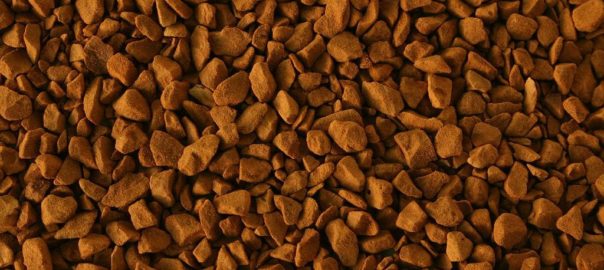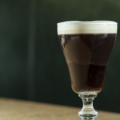This episode is all about the product which makes up over half of the global coffee market: instant coffee. As it turns out, instant coffee has more than earned it’s status as a mainstay in hotel rooms and grocery store aisles across the world – it may have even helped the U.S. win a war.
This week’s episode is brought to you by My Espresso Shop. Use offer code “BoiseCoffee” at checkout to receive 10% off your order containing an espresso machine or grinder.
Colin
Episode transcript:
This episode of The Boise Coffee Podcast is brought to you by My Espresso Shop – a leading online retailer of espresso machines, grinders and related accessories. Use offer code “BoiseCoffee” to get 10% off your espresso machine or grinder today at MyEspressoShop.com
I spend a lot of time on this show talking about the “specialty” side of coffee. On this end of the spectrum, usually we’re interested in taking each step of the coffee-making process and maximizing the taste we can get from each bean. No step in getting the bean from the ground to the cup is left out – we’re interested in making every aspect of coffee production better, in terms of flavor profile, as well as in terms of bettering the livelihoods of those picking and processing the coffee.
Occasionally on this show, I’ve brought up what I tend to call “commodity coffee.” That is – coffee that is bought and sold as a commodity, rather than a specialty item. Commodity coffee is nearly always stale, having sat pre-ground, in plastic containers and on the shelf at a grocery store for weeks, or perhaps months. You know the names of these companies well – Folgers, Maxwell House, Yuban, and Chock full o’ Nuts, to name a few.
If we’re looking at coffee as a scale from “specialty” to “the opposite of specialty,” you might be tempted to think commodity coffee is at that far end. And in some way’s you’d be right – in terms of normal brewing processes, this scale is about as complete as you’ll get. In terms of total coffee produced, however, this scale is only half the picture.
About 50% of the world’s green coffee market goes towards producing coffee that’s brewed in a standard pot, Keurig machine, or by manual methods like a pour-over cone. The other 50%? That’s used to make instant coffee.
I’m Colin Mansfield, and welcome to The Boise Coffee Podcast.
The history of instant coffee dates back to the late 1800’s, and was most influenced by World War I. Before we get into all that, though, I want to take a second to talk about what instant coffee actually is. Basically, in a nut shell, instant coffee is made of coffee flavor crystals that only require hot water to dissolve into. There is no brewing process or filter needed, just a tube or baggie of the coffee crystals. Usually this feat of science is accomplished through a somewhat complex process of preparing green coffee beans as you usually would – roasting, then finely grinding – before hitting them with extremely hot, pressurized, liquid water (around 350 degrees F). After this unconventional “batch brew,” the liquid coffee’s concentration is increased, usually through evaporation. Finally, the concentrated brew is freeze-dried, then broken into small pieces, referred to as “coffee crystals.” Add hot water to these crystals, and you’ve got yourself a cup of instant coffee.
Instant coffee was independently created by three people in three different countries between 1880 and 1901: Alphonse Allais from France, David Strang from New Zealand, and Satori Kato from Chicago. Kato introduced his early version of instant coffee at the Pan-American Exposition in Buffalo, New York sometime between 1901 and 1910. Shortly thereafter, an inventor named George Constant Louis Washington developed his own process of making instant coffee and began marketing it commercially. While Washington didn’t hold a patent for creating instant coffee, he was the first to pursue it as a commercially viable product. In 1909 his product was first marketed as “Red E Coffee,” then rebranded as “Washington’s Coffee” under the “G. Washington Coffee Refining Company” in 1910.
The advertising angle that Washington’s company took was interesting: they claimed that their instant coffee was more modern and purer than its brewed equivalent. It may sound strange to us now, but the idea that processing foods made them better for humans to consume was a common idea in the early 1900s. Listen to this Washington’s Coffee advertisement that ran in the New York Times on January 2nd, 1922. It reads,
“Do you know coffee? Do you know that there are millions of people who have stopped using the ground bean coffee? Back yonder everyone used whole brown sugar – without refining (I’m adding emphasis here, but the text really is in italics) – now everyone uses refined, white granulated sugar. In the same way, millions have stopped using bean coffee, with its messy grounds – and are using refined coffee (again, italics), made by Mr. G. Washington’s special refining process. G. Washington’s coffee is just as superior to whole bean coffee as modern white sugar is to old-fashioned brown sugar, and you put it in the cup just as you do the sugar. It dissolves instantly when you add water.”
Believe it or not, that’s only half the ad, but I think you get the point.
Instant coffee may have remained as little more than a convenient substitute for traditional brewed coffee, had it not been for a little event called World War I. Coffee consumption was seen as valuable to soldiers largely because of its caffeine boost, and Washington’s product saw major use as combat rations for both the Canadian and U.S. expeditionary forces. By the time the U.S. entered the war in 1917, all of G. Washington’s production shifted to the war and American military use. According to the book “Uncommon Grounds,” other coffee producers began springing up as well to meet the Army’s huge coffee demand. In fact, in the final period of the war the demand for coffee was about 6 times the national supply.
Instant coffee was a huge hit with Soldiers. A quarter ounce double-strength packet of the stuff was included for each man in the distributed food ration packages. It was also included in both reserve rations, and trench rations. Soldiers nicknamed it a “cup of George” and would drink the stuff both cold and hot. Caffeine, after all, was the end goal, not necessarily taste.
In 1918 one Soldier wrote this in a letter from the trenches, “I am very happy despite the rats, the rain, the mud, the draughts, the roar of the cannon and the scream of shells. It takes only a minute to light my little oil heater and make some George Washington Coffee … Every night I offer up a special petition to the health and well-being of Mr. Washington.”
World War II saw another big increase in the market for instant coffee, but by this time other companies had caught on. In addition to G. Washington Coffee, another big player stepped onto the field in 1938 and launched their product using a more advanced refining process – the company was named Nescafe.
The next big advance in instant coffee came after World War II, and as an indirect result of the findings of the National Research Corporation (or NRC). The NRC had developed methods for freeze drying medical products for wartime use, like penicillin and blood plasma. After the war ended, the NRC began to adapt their processes for peacetime uses. They formed the Florida Foods Corporation to produce a concentrated orange juice powder. Originally they had a contract with the U.S. Army, but this dried up as soon as the war officially ended. Turning their focus towards the public at large, the Florida Foods Corporation decided to alter their powdered orange juice formula and produce a concentrate instead. They also changed their name to reflect the time it would take to make a gallon of orange juice from their new product – they called themselves Minute Made.
The freeze-drying findings that the NRC had made towards the end of the war were adapted by large companies like Nescafe and applied to their instant coffee products.
Since that time instant coffee has remained relatively the same. Despite nearly 50% of all grown coffee beans being used to make instant coffee, it accounts for 10% or less of the coffee drank at home in nearly every country on earth, with one notable exception: England. As of 2014, in England, 77% of the coffee bought to drink at home came from instant coffee sales. One BBC article about the popularity of instant coffee in Britain blamed the U.S. saying, “It’s the Americans who are largely credited with giving the UK the stuff. It came over in the ration packs of US troops during World War Two. For a nation of coffee drinkers it was a temporary solution to not having a freshly brewed “cup of Joe”. For a nation of tea drinkers it was something new and exciting and caught on.”
This episode of The Boise Coffee Podcast is brought to you by My Espresso Shop, a leading online retailer of espresso machines and grinders. If you’re looking for new espresso equipment for your home or business, My Espresso Shop has some of the best deals and best selection you’re going to find. With over 20 different brands to choose from, comparing equipment has never been easier. Right now the folks at My Espresso Shop are offering Free Shipping & No Sales Tax on all espresso machines and grinders. Not only that, but their Price Match Guarantee ensures you’re getting the best deal on the market. As a cherry on top, My Espresso Shop is offering listeners of The Boise Coffee Podcast 10% off their espresso machine or grinder – just use offer code “BoiseCoffee” at checkout. Take a look now at MyEspressoShop.com. When it comes to great coffee equipment, you’re just not going to find a better deal than this. Again, visit MyEspressoShop.com.
For the better part of seven decades there was no large shakeup in the world of instant coffee. The industry giants had established their marketshare, and everyone else began marching on towards drinking normal, ground and filtered coffee with an increasing focus on how that coffee tastes. In 1971 Starbucks was founded in Seattle, Washington. By 2001 Starbucks had opened over 4,500 stores. Just eight years later, in 2009, they had over 16,500 stores. 2009 was an important year for Starbucks for two reasons: first, they launched the My Starbucks Rewards loyalty program and started taking payments using the Starbucks Card mobile system. Second, they launched Starbucks VIA instant coffee.
At the time, Starbucks billed VIA as a “opportunity to reinvent a category, create new rituals and grow our customer base.” That was Howard Schultz, Starbucks President and CEO. Professor John Quelch of the Harvard Business School, and co-author of the best-selling March 2006 HBS case study on Starbucks, added this:
“Instant, soluble coffee has long been the unspeakable wasteland of the coffee business. Conventional wisdom would be that no premium brand should go near it. But Howard Schultz’s vision from day one has been to bring quality coffee to the mass market. Starbucks VIA™ Ready Brew continues that effort.” Quelch continued, “Look at the packaging. Taste the product. Starbucks VIA™ is going to redefine and reenergize the instant coffee subcategory. It will offer time-strapped Starbucks loyalists a chance to stretch their dollars and sustain their Starbucks brand consumption frequency. It will also offer non-Starbucks users an affordable entry point into the Starbucks world; after trying Starbucks VIA™, they may want to visit a store for the full Starbucks experience.”
I’m not sure whether Professor John Quelch was payed to say those things…but suffice it to say that the message being sent by Starbucks was that they were taking an old, archaic way of making coffee and re-inventing it to fit the modern lifestyle.
Except really, they weren’t.
The best coverage I could find from 2009 that talks about how VIA is made is from a Fortune.com interview with Andrew Linnemann, who at the time was the director of green coffee quality and operations at Starbucks. In this article, Linnemann discusses some of the processes that Starbucks uses to create VIA. Essentially, it’s a combination of the same coffee crystals we discussed earlier, as well as super-finely ground coffee – they call it “micro-ground.”
“We use the same equipment as the other guys, but how we use the equipment is much different,” Linnemann said in the interview. He explains to the interviewer that while other instant coffee producers are focused on massive yields, Starbucks is more focused on taste. They break the standard industry processes of creating instant coffee into much smaller steps, focusing on how to make each of those produce better-tasting coffee rather than simply more product. Those smaller steps certainly makes for a more expensive process, which helps explain why, at launch, Starbucks was charging $1 per packet of the stuff.
Linnemann went on to say that “it is the micro-grinding technology where we really cracked the code,” but refused to elaborate further. I think it’s safe to assume that when Starbucks says “micro-grind” they mean exactly what they say. After they make the coffee dust, Starbucks likely freeze-dries the crystals and dust together to maximize flavor. But here’s the thing: Starbucks VIA definitely does taste better than standard instant coffee. It’s the closest thing you’re going to find to a real, honest cup of coffee in the instant world. Is it good? Well, I suppose that depends on whether you find yourself normally drinking Folgers instant, commodity coffee from your grocery store, or honest-to-god specialty coffee.
Instant coffee is one of those things that I’m not sure would’ve ever gained a significant foothold in any culture had it not been for World War I and II. The great demands of those wars caused Soldiers and Families to embrace the little things, like a taste from home or the aroma from a time when their lives were simpler and without as much grief. In that sense, instant coffee was invented and mass-distributed at the perfect time in world history. It came at a time when people needed just a little more hope in their lives, andmore caffeine.
Does instant coffee have a home on my shelf? Nah, I think I’ll stick with my manual brew methods and specialty beans. But it certainly deserves an honorable spot in the annals of coffee history.
Thanks for listening to The Boise Coffee Podcast! As always, I’m your host, Colin Mansfield, and thanks for stopping by. If you like what you heard, feel free to check out previous episodes of the show on iTunes, Stitcher, or wherever you usually get your podcasts from. Today’s episode was brought to you by My Espresso Shop – take a look at their great selection of espresso machines and grinders today at MyEspressoShop.com. Be sure to use offer code “Boise Coffee” at checkout to get 10% off your order. Again, that’s MyEspressoShop.com
Thanks for listening, and have a wonderful rest of your week!
Podcast: Play in new window | Download
Subscribe: Apple Podcasts | Android | Stitcher | RSS




